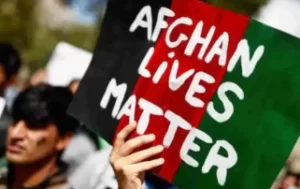Juvenile Justice System in India: Public Opinion and Judicial Trend
Written by: Neetu lather
Introduction
Children are the future of our country and it is the responsibility of everyone to ensure that they have a safe environment to live in but today, Juvenile crime is like a disease in our society. In a developing country like India in the last 10 years, a huge increase is seen in the rate of Juvenile crime. A child is born with innocence and if nurtured with tender care and attention, then they grow positively. Bodily, psychological, social, and spiritual development make the children capable of identifying their fullest potential.
On the opposite side, harmful surroundings, negligence of basic needs, wrong company, and other abuses may turn a child into a delinquent. A child who is an uncut diamond depends on society on how to shape an uncut diamond. The government has started Observation homes and Shelter homes for the care of such offenders then also continue to increase is seen in juvenile delinquent cases. For delinquent juveniles, it is said that Prevention is better than cure juveniles should be protected from going to the wrong path.
Juvenile Justice System in India
A “Juvenile” or child means a person who has not completed 18 years of age. Juvenile delinquency means illegal acts done by a minor or by the involvement of a minor. And Juvenile Justice is the legal system that aims to protect all children, includes “the children in need of protection”, other than “in conflict with law”. The Juvenile Justice System in India is structured around the Constitutional mandate prescribed in Articles 15(3), 39 (e) & (f), 45, and 47, as well as several IN covenants, such as the UN Standard Minimum Rules for Administration of Juvenile Justice (Beijing Rules) and the UN Convention on the Rights of the Child (CRC). Separate treatment for children and women is provided in COI.[1]
Procedure
“In Juvenile justice system, police are the first major component.” In every police station, a Special Juvenile Police Unit (SJPU) shall be set up. A police officer or person from the SJPU usually brings the child before the Juvenile justice board. The Juvenile Justice Board or Lower Court judgments are being not binding on other courts. The JJB consists of a metropolitan magistrate or a judicial magistrate of the first class and two social workers, at least one of whom should be a woman. JJB has to resolve cases maximum within 4 months.
The Children Act, Juvenile Justice Act, 1986, Juvenile Justice (Care and Protection of Children) Act, 2000, and Juvenile Justice (Care and Protection of Children) Act, 2015. Under the JJ, 2000 the maximum sentence for a juvenile who has broken the law was three years in a protective home, no matter how serious the crime is. After the incident of Nirbhaya people demanded a death sentence for the child involved in the case.
There was up roaring in parliament and the new law (Juvenile Justice Care and protection of children 2015) came into existence in India. In heinous offences, a juvenile in the age group of 16-18 to be tried like an adult and even punished with life imprisonment or the death penalty. JJB will examine the crime to discover if the crime was committed as a ‘child’ or an ‘adult’.
The punishment for the offence of selling or buying children will be imprisonment of 5 years.[2] The 3 types of offences defined by the new Act, 2015 are heinous offence- an offence that attracts a minimum penalty of 7 years imprisonment under any existing law, serious offence- an offence that attracts imprisonment between 3 to 7 years and, petty offence- that attracts imprisonment with up to 3 years.[3]
In India, many times judiciary has expressed its serious concern relating to the proper implementation of provisions of law for the beneficiary of children. The Act has established the Child Welfare Committee to address the needs of “Children in need of care” and the JJB to deal with “children in conflict with the law”. For the “children in conflict with law”, the Act envisages establishing Observation Homes and Special Homes. For the “Children in need of care and protection”, and a law has also been made to establish Comprehensive Children’s Homes.
If any organization or person brings a child before the court it should be informed to their local police unit first. After-care organizations are for the care, guidance, and protection of juveniles in conflict with law or children in need of care and protection who have completed their terms in the Special Homes or Children’s Homes and their rehabilitation process is not completed. Aftercare is the means and rehabilitation is the end. After-care organizations shall enable such children to adapt to society and encourage them to live a normal life.
Under institutional care, children are provided with various services including education, health, nutrition, de-addiction, treatment of diseases, vocational training, skill development, life skill education, counselling, etc. to help them assume a constructive role in society. The variety of non-institutional options include sponsorship and foster care including group foster care for placing children in a family environment that is other than the child’s biological family, which is to be selected, qualified, approved, and supervised for providing care to children.
The Model Rules under the Act provide that the State Government shall provide for training for personnel of each category of staff in keeping with their statutory responsibilities and specific job requirements. Based on the resolution passed in the conference of Chief Justice of India 2009, several HC constituted “Juvenile Justice Committees” to be headed by sitting judges of HC. So the tendency of the judicial approach reflected in the judgments of SC and HC towards a juvenile delinquent can be seen.
Causes of Juvenile Crimes:
There is no single cause of Juvenile crimes, but there are many and varied causes such as Biological Causes, Socio-Environmental Causes, Socio-economic conditions (rich-poor), Psychological factors (impulsive behaviour, depression), Bad company, Extra-pocket money, Revenge factor, Poor literacy rate, Overexposure to media, Mobility (Migration), Cultural conflicts (inhabitants & immigrants), Family background, Family structure, Broken Homes (the parents is dead or living separately), Child’s Birth order is the family( the oldest and youngest children ), Parent-child Relationship, Lack of values, Cheap literature, Love of adventures, Early sex experience, and Mental conflicts, etc.
Public opinion and Judicial Trends
Despite having such a comprehensive law in India, it is often felt by people that there is an inherent risk of violation of a child’s rights within the JJS. It’s found that police should be more serious in the case of children who need special care. In our country, there is not much awareness about the proper implementation of the legislation. Children “in need of care and protection is continued to languish in poorly managed institutions and children “in conflict with law” are to be treated as criminals. Once again a “child-friendly” police system needs to be ensured through ongoing sensitivity training.
As in the Nirbhaya case 2012, one of the accused was a juvenile (just a few months away from being 18 years old) SC refused to interfere with the age of juvenility in cases where juveniles are found guilty of heinous crimes. It was held that the provisions of the Act comply with the Constitutional directives and IN conventions, so directed JJB to decide in the best interest of the child as per law.
Thereafter, the board sentenced the said juvenile to stay in a Reform Home for 3 years. The said verdict of SC was criticised by the public including the mother of the victim, saying that by not punishing the juvenile as an adult, the court is encouraging other teenagers to commit such similar crimes without any fear.
Due to this dissatisfaction towards the court verdict, the Ministry of Women and Child Development prepared a new draft, allowing children between16-18 age group to be tried as an adult if committed any heinous offence such as rape, robbery, murder, burglary, etc. so that it creates a deterrent effect for others. The reason behind amending the law was the incident of 2012, Delhi Gang Rape Case, mentioned above.[4]
Judicial trends relating to juvenile delinquency are being set by various courts which can be assessed in the following ways: Age of juvenile, Jurisdiction, Apprehension, and production, Right to Bail, Disposition.
Preliminary assessment for releasing juvenile on bail made in the heinous offence of the Board, there is a requirement of law that the Board may take the assistance of “experienced psychologist or “psychosocial experts”. There is no expert in most of the Session Divisions which is a really scary state of affairs whereby the Board is often handicapped.
In the absence of an expert psychologist or psycho-social expert, it’s not possible to assess the mental or psychological faculty of mind of that particular juvenile objectively, which is the foundation stone of Juvenile Justice Jurisprudence in its correct perspective, In the absence of detailed objective preliminary age group of 16-18 years, their level of understanding about the gravity of the offence and other attending circumstances, the very purpose and objective of present Act would go haywire.
So it directed by the Court that the State Government take such a remedial step preferably within six months to appoint a panel of at least six expert psychologist/psycho-social experts in each Commissioners Division, so that their services may be utilized by the respective Juvenile Justice Boards within that particular Division for making such an assessment of delinquent juveniles.[5]
An offence that does not provide a minimum sentence of 7 years cannot be treated to be a heinous offence. an offence where the maximum sentence is more than 7 years imprisonment, but no minimum sentence or a minimum sentence of fewer than 7 years is provided, shall be treated as ‘serious offences’ within the meaning of the Act and dealt with accordingly till the Parliament takes the call on the matter.[6]
Recommendations
- Approach to preventing juvenile delinquency (identify & give treatment).
- Development programs with professional training, vocational educations should be provided.
- Involvements of NGOs and local communities can result in the prevention of juvenile gang crimes.
- Government should put more emphasis on attractive beneficial long-term schemes for juveniles so that they regain their self-confidence and feel motivated to join the mainstream society.
- A “child-friendly” police system should be established.
- A standardised curriculum should be developed for persons dealing with children encountering the JJS, include educating the personnel about child psychology, different psychological and biological needs of children in need of care and protection, and children in conflict with the law, as well as sensitisation and awareness about the community, psychological and socio-cultural determinants .
- Appointment of mental health professionals regularly in Childcare institutions (proper functioning, qualified staff, and mental health professionals available)
- Accountability and answerability of childcare institute for any lack.
- Counselling of the juveniles at the time of their entry into the institutions should be made a norm. (Telling reason for being kept in the institutions, the possible situations during a stay at the institution, the authorities to be contacted for help.)
- screening mechanism for detection of mental disorders at the childcare institutions with proper training,
- Job and livelihood oriented vocational training, Digital learning, and technology-driven courses
- Training and counselling sessions with prior inmates about substance use problems, or other issues[7]
Conclusion
The objective of the JJS is rehabilitation & reformation. It is to create an opportunity for the child to develop his personality. The goal, after all, is to proceed ahead to create a positive society of high order. Children are the future of the country. They must be converted from bed to good personalities. However, looking at the experience, we have a law but have to bridge the wide gap between theory and practice.
About the Author

Neetu Lather
Student at Vivekananda School of Law and Legal Studies, VIPS.
She has participated in various academic events including moot court Competitions and successfully completed the Legal Drafting and Office Management Course at Vivekananda Institute of Professional Studies. Her areas of interest and research work are Constitutional Law, Competition Law, Criminal Law, Intellectual Property Rights and International law.
[1] Aprajita Bhargava, Juvenile Justice In India, The Law Brigade Publishers(Aug 18, 2021), https://thelawbrigade.com/criminal-law/juvenile-justice-in-india/
[2]Bhagyashree Manohar Deshpande, Judicial trends on juvenile Delinquency, Research Gate(Aug 17, 2021) https://www.researchgate.net/publication/335034065_JUDICIAL_TRENDS_ON_JUVENILE_DELINQUENCY
[3] Chhaya Khosla, Overview of Juvenile Justice Law in India, Latest law.com(Aug 17, 2021)
[4] Mukesh v. State (NCT of Delhi) [(2017) 6 SCC 1]
[5] Radhika (Juvenile) v. State Of U.P. And Another [2019] 3 ACR 2123
[6] Shilpa Mittal v. State of NCT of Delhi & Anr (2020) 2 SCC 787
[7]Shipra Tiwari†, Juvenile Justice System in India and the Mental Health of Juveniles, SCC online(Aug17, 2021) https://www.scconline.com/blog/post/2021/06/05/juvenile-justice-system/
Read the Previous Article
Public-Private Partnership in Airports Development in India: A critical study
The era of Industry 4.0 and Gig Economy: The Future of Work and the New Labour and Industrial Regime
Climate Change Adaptation and Technology Transfer: Tightening the Knot by Human Rights
Advertising Law: Observing the Fine line Amongst Online Advertising and the Law





